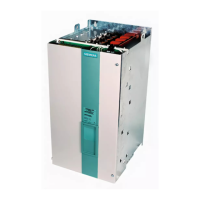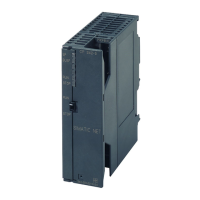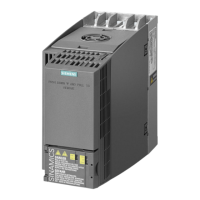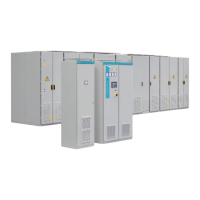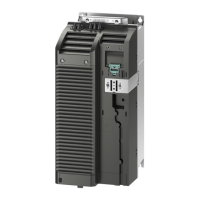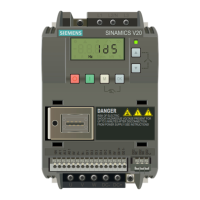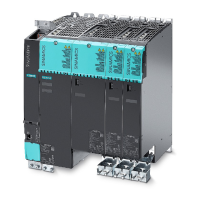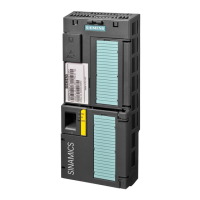Technology Option F01 08.2012
6SE7087-6QX70 (Version AN) Siemens AG
9-18 Compendium Motion Control SIMOVERT MASTERDRIVES
The following encoders can be evaluated as external machine
encoders for position sensing:
♦ Pulse encoder [255]
→ Sensor board: SBP
♦ Multiturn encoder [270] , e.g. encoder with EnDat or SSI protocol
→ Sensor board: SBM2
(with analog fine resolution for EQN)
♦ Optical sin/cos encoder
→ Sensor board: SBM2
The sensor board for the external machine encoder can be plugged into
any slot except slot C. When a supplementary technology moduleT100,
T300 or T400 is used, the evaluator module for external machine
encoder must have been plugged into Slot A.
All encoder evaluation systems generate a B070 status signal (or B071
for external encoders) which returns a "1" signal whenever the
measured data acquisition system is operating error-free.
When a pulse encoder is employed as the motor encoder, the
referencing modes "To Left of BERO" and "To Right of BERO" cannot
be used since this type of encoder does not evaluate the zero pulse.
If the external encoder is required for an application, the block "Position
acquisition external encoder" (function diagram 335) must be slotted
either in the same time slot as or a faster time slot than the technology
function.
The positional information is required, in addition to the speed, for the
technology functions. The MASTERDRIVES MC enables direct position
sensing by the motor encoder, and so a further externally mounted
encoder is not required for position control. An additional external
encoder need only be used for position sensing if this is necessitated
by the application technology. The encoder types can be subdivided
into incremental and absolute encoders.
Incremental encoders (pulse encoders) only detect relative changes in
position. The encoder system must be referenced, in order to allow
absolute positioning. This is performed using a proximity switch (BERO)
with a known mechanical position.
Absolute encoders can be subdivided into two groups:
♦ Singleturn encoders (two-pole resolvers, optical sin/cos encoders)
indicate the absolute position within one revolution. If you need to
perform absolute positioning movements over several revolutions
with a singleturn encoder (this is normally the case), the system
must be referenced as with an incremental encoder.
♦ Multiturn encoders detect the position over a defined range (e.g.
4096 revolutions) in addition to the position within one revolution,
and they store this value when the power supply is switched off.
Referencing is therefore not necessary with a multiturn encoder.
NOTE
NOTE
Overview
Incremental
encoders
Absolute encoders
